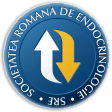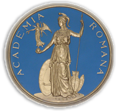
- Login
- Register
- Home/Current Issue
- About the journal
- Editorial board
- Online submission
- Instructions for authors
- Subscriptions
- Foundation Acta Endocrinologica
- Archive
- Contact
 Romanian Academy
Romanian Academy
 The Publishing House of the Romanian Academy
The Publishing House of the Romanian Academy

ACTA ENDOCRINOLOGICA (BUC)
The International Journal of Romanian Society of Endocrinology / Registered in 1938in Web of Science Master Journal List
Acta Endocrinologica(Bucharest) is live in PubMed Central
Journal Impact Factor - click here.

-
Case Report
Jalloul W, Tibu R, Ionescu TM, Stolniceanu CR, Grierosu I, Tarca A, Ionescu L, Ungureanu MC, Ciobanu D, Ghizdovat V, Stefanescu C
Personalized Nuclear Imaging Protocol in Cases with Nodular Goiter and Parathyroid AdenomaActa Endo (Buc) 2021 17(3): 393-398 doi: 10.4183/aeb.2021.393
AbstractA 62 years old woman was diagnosed with multinodular toxic goiter and primary hyperparathyroidism/ left parathyroid adenoma by hormonal assessment, ultrasound and nuclear thyroid/parathyroid scans. Cervical ultrasound illustrated a multinodular aspect of the thyroid with solid nodules and cystic-component nodules; the larger one represented a multinodular complex with necrosis areas in the left thyroid lobe, ACR TI-RADS score 4 (moderately suspicious). Functional nuclear imaging was performed for accurate differential diagnosis between thyroid vs. parathyroid localization, between cold vs. hot nodules, and eventually, for guiding the choice of a subsequent Fine- Needle Aspiration Biopsy (FNAB). Scans described an early intense 99mTc-sestaMIBI uptake with no 99mTc-pertechnetate uptake in the left thyroid lobe larger nodule. Due to the suspicion of malignancy for this nodule, we performed an additional scan (1 hour before the classical 2 hours parathyroid delayed scan). The intense uptake persists in both delayed scans suggesting no malignant phenotype and which was confirmed after surgery by benign histology. In conclusion, using a 99mTc-sestaMIBI personalized protocol, related to the radiotracer cellular uptake mechanisms: 1 hour scan (supplementary image, corresponding to the maximum uptake pattern of 99mTc-sestaMIBI for cancer cells) and 2 hours scan (for parathyroid washout evaluation) may avoid unnecessary extensive thyroid surgery. -
General Endocrinology
Kacimi L, Benmouloud A, Zatra Y, Aknoun-Sail N, Charallah S, Khammar F, Amirat Z, Khaldoun M
Chronic Exposure to Bisphenol a Induced Testicular Dysfunction in Gerbil: Repro-Protective Effect of Jujube HoneyActa Endo (Buc) 2024 20(4): 444-454 doi: 10.4183/aeb.2024.444
AbstractObjective. Infertility affects an estimated 17.5% of couples worldwide, according to the last report published in 2023 by WHO. A significant cause of this global fertility decline is due to environmental endocrine-disrupting chemicals exposure, which have the ability to interfere with the endocrine system. Bisphenol A (BPA), a synthetic chemical product leads to health concerns for its endocrinedisrupting properties. Jujube honey contains antioxidants and active compounds, has various therapeutic properties. This study aims to determine testicular dysfunction and endocrine imbalance induced by BPA chronic exposure and the possible protective effect of jujube honey in gerbil. Materials and methods. Eighteen adult male gerbil was either considered as control (n=6, group 1) or exposed to 50 mg BPA/kg/day Group 2, n=6) and the BPAtreated group was given jujube honey at 200 mg/kg/day by oral gavage Group 3, n=6) for six weeks. At the end of the experiment, testicular weight, epididymal sperm count, endocrine status, histopathology of testis tissue and oxidative stress parameters were evaluated. Results. The results showed a decrease in testicular weight, sperm quality and plasma levels of testosterone and estradiol in the BPA-treated group. Furthermore, histopathological findings revealed germinal epithelium alteration characterized by germ cell degeneration, disordered arrangement of the germ cell layers and vacuolization and decreased number of Ki-67-positive germ cells. The results showed a decrease in testicular levels of superoxide dismutase, catalase and reduced glutathione with an increase of malondialdehyde in the BPA-treated group. However, in the jujube honey+BPA group, histopathological studies revealed a systematic array of germ cells with less vacuolization, improved sperm parameters, restored plasma testosterone and estradiol levels and increased antioxidative capacity of the testes. Conclusion. These findings suggest a potential protective effect of jujube honey against BPA-induced testicular damage and oxidative stress caused by endocrinedisrupting chemicals.